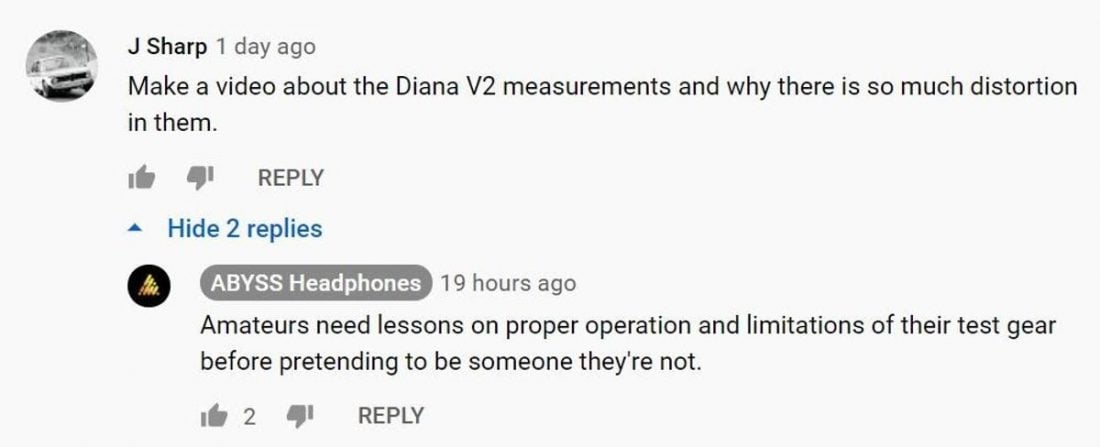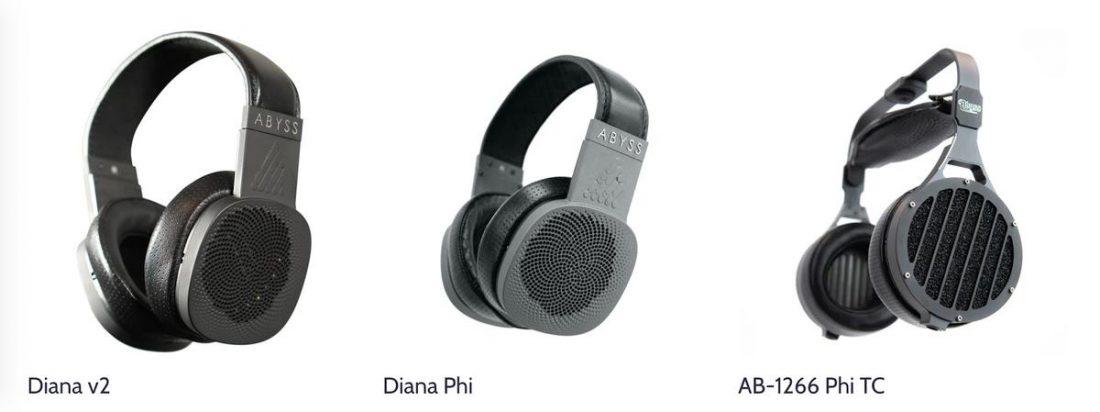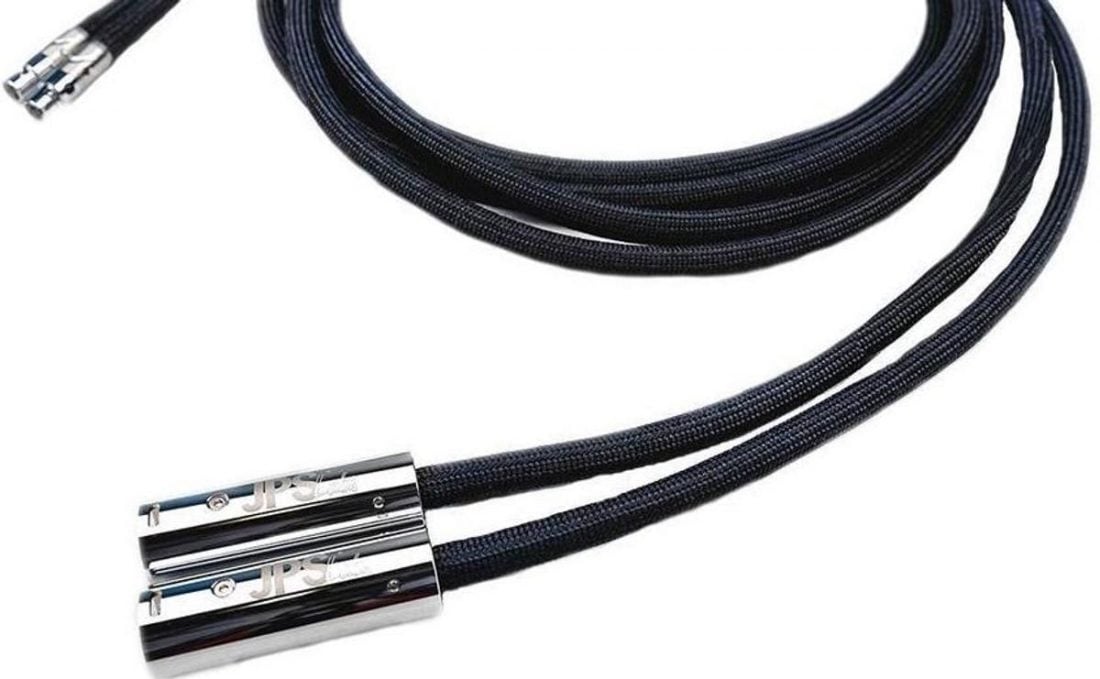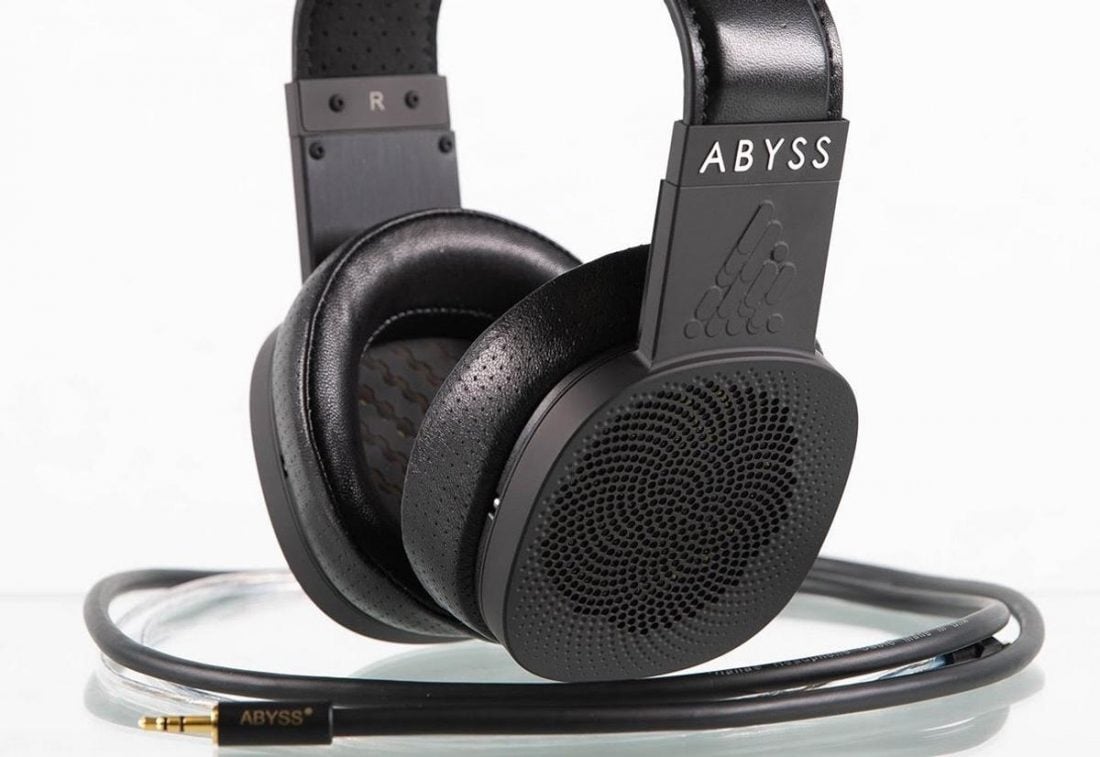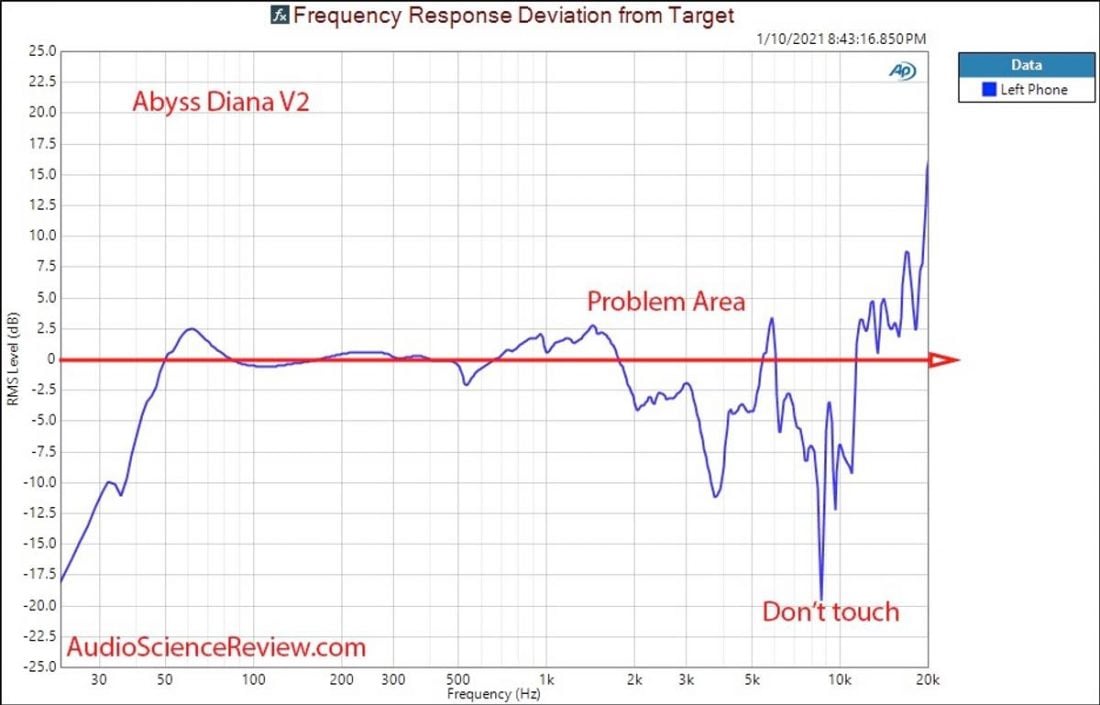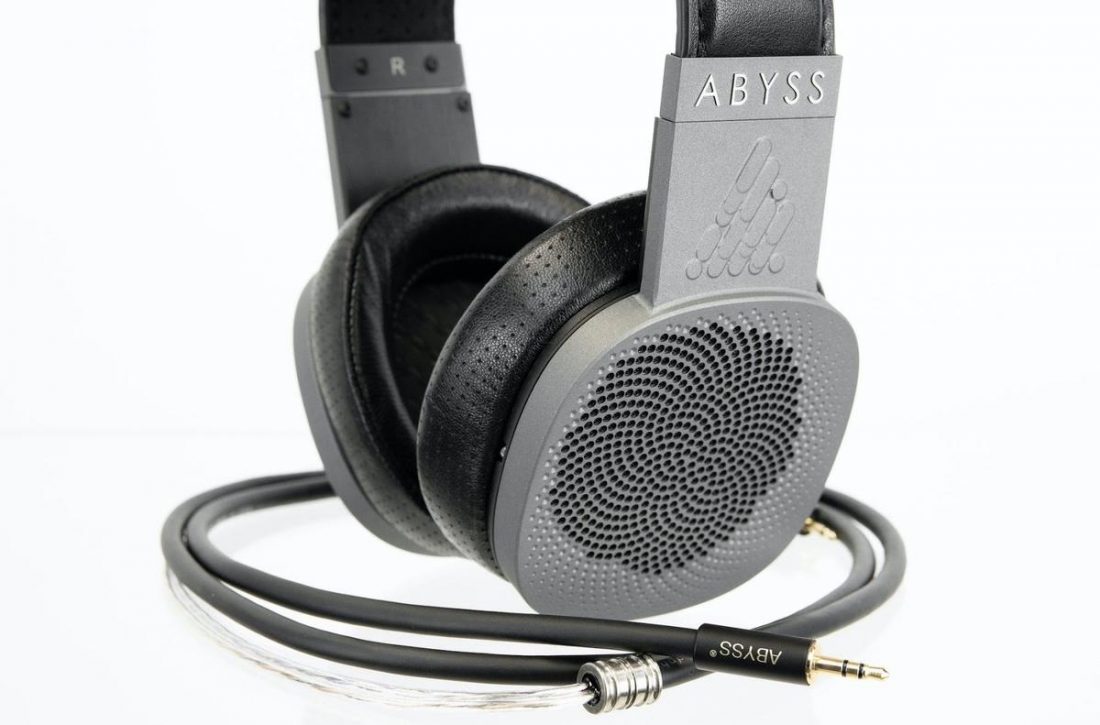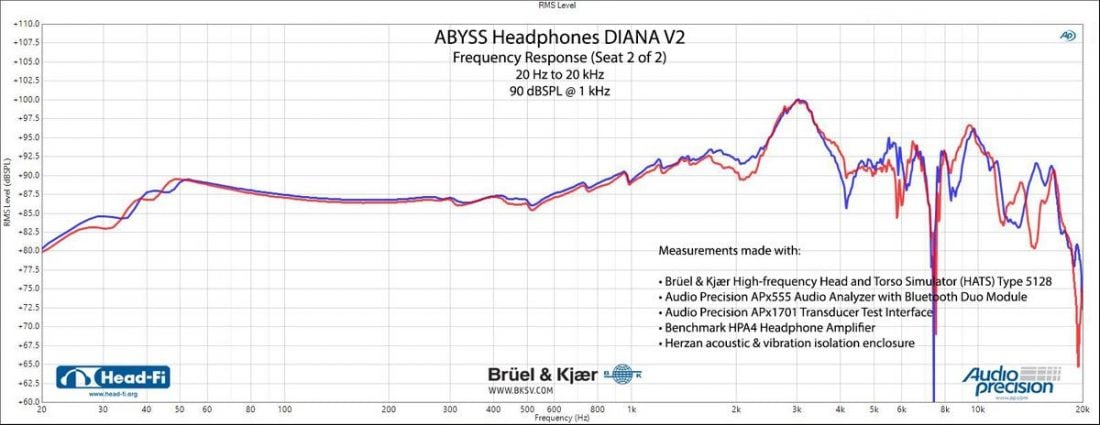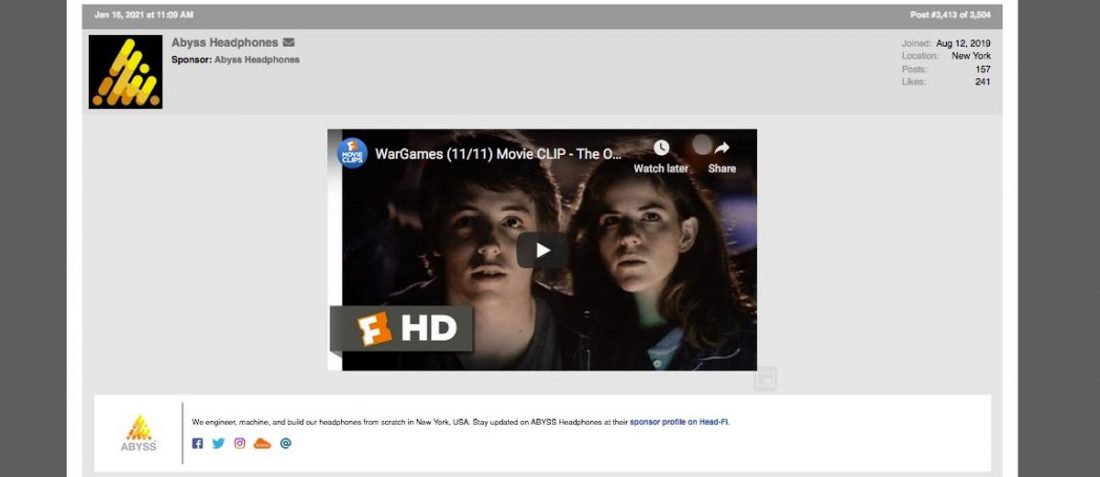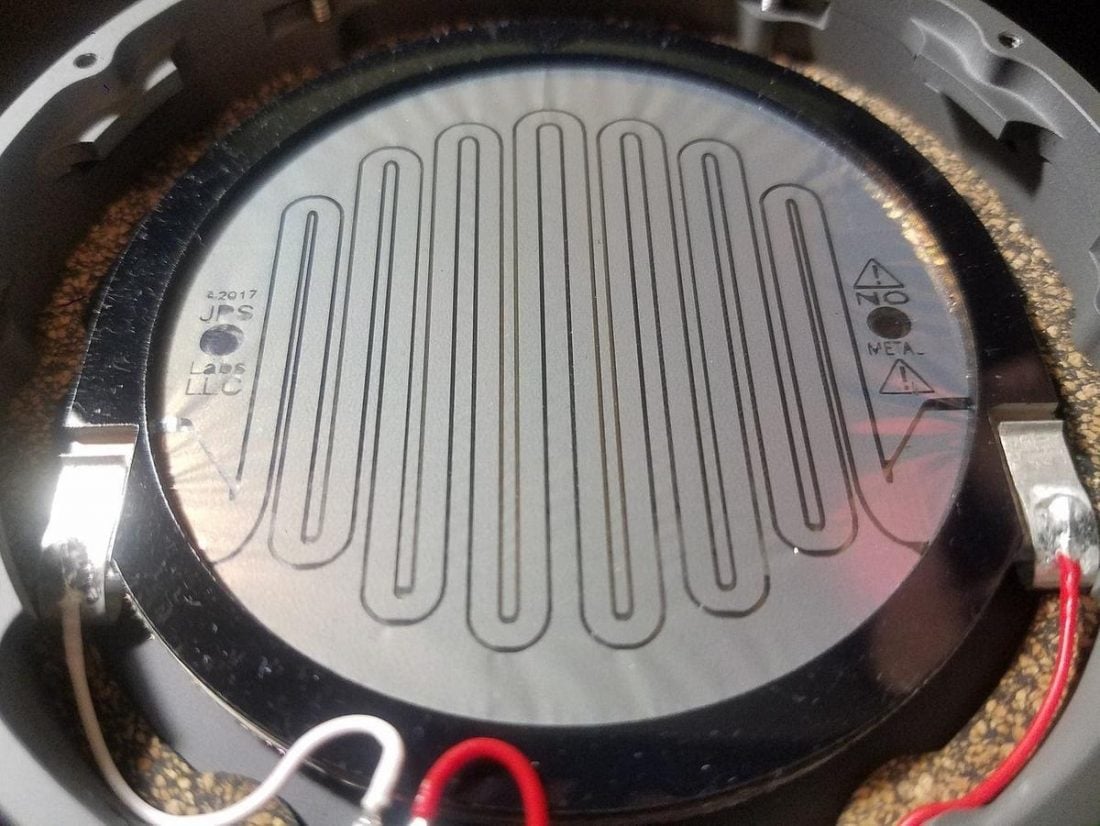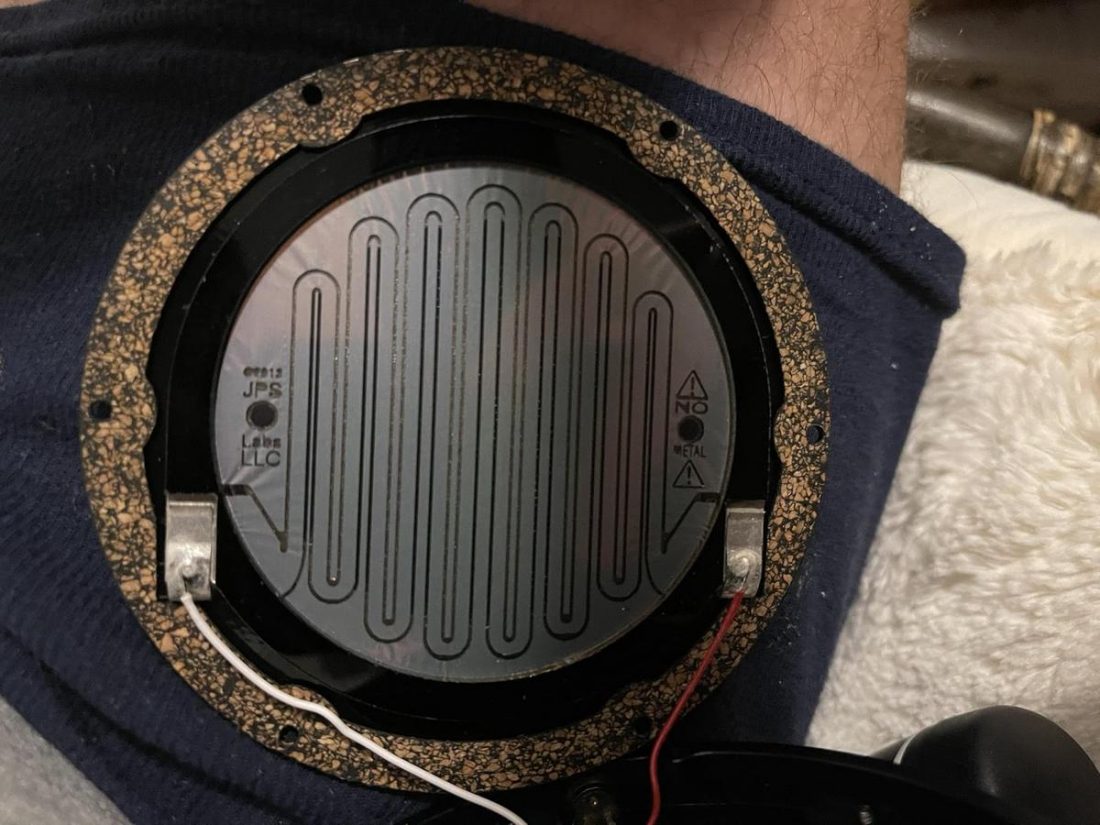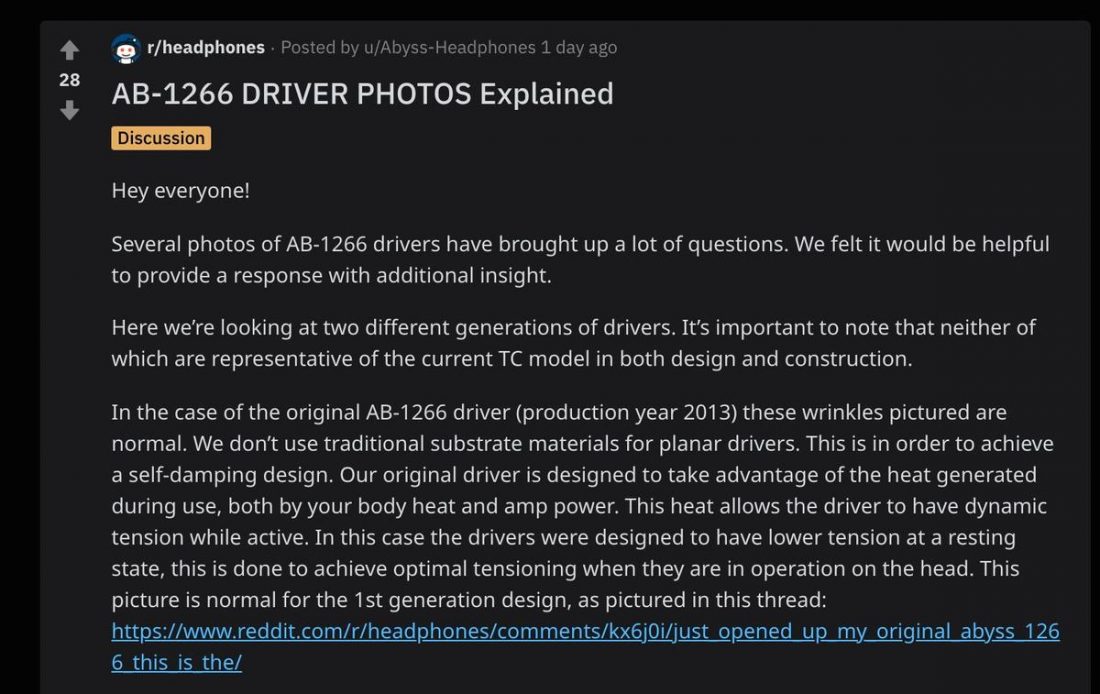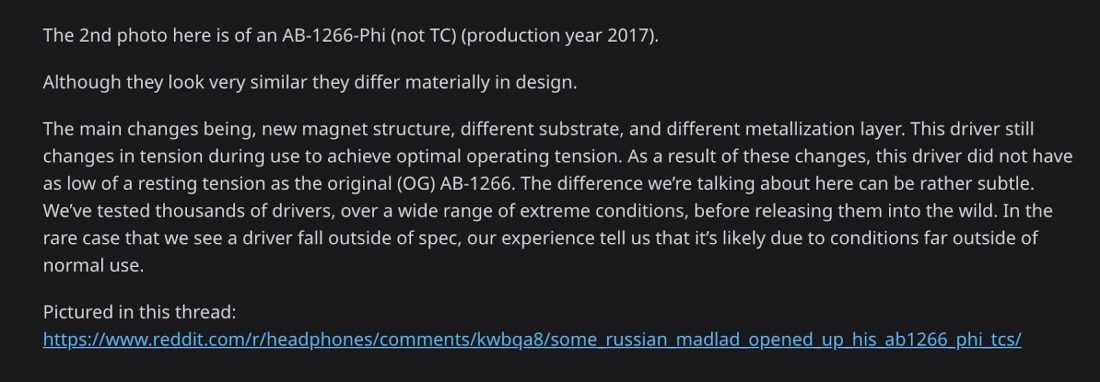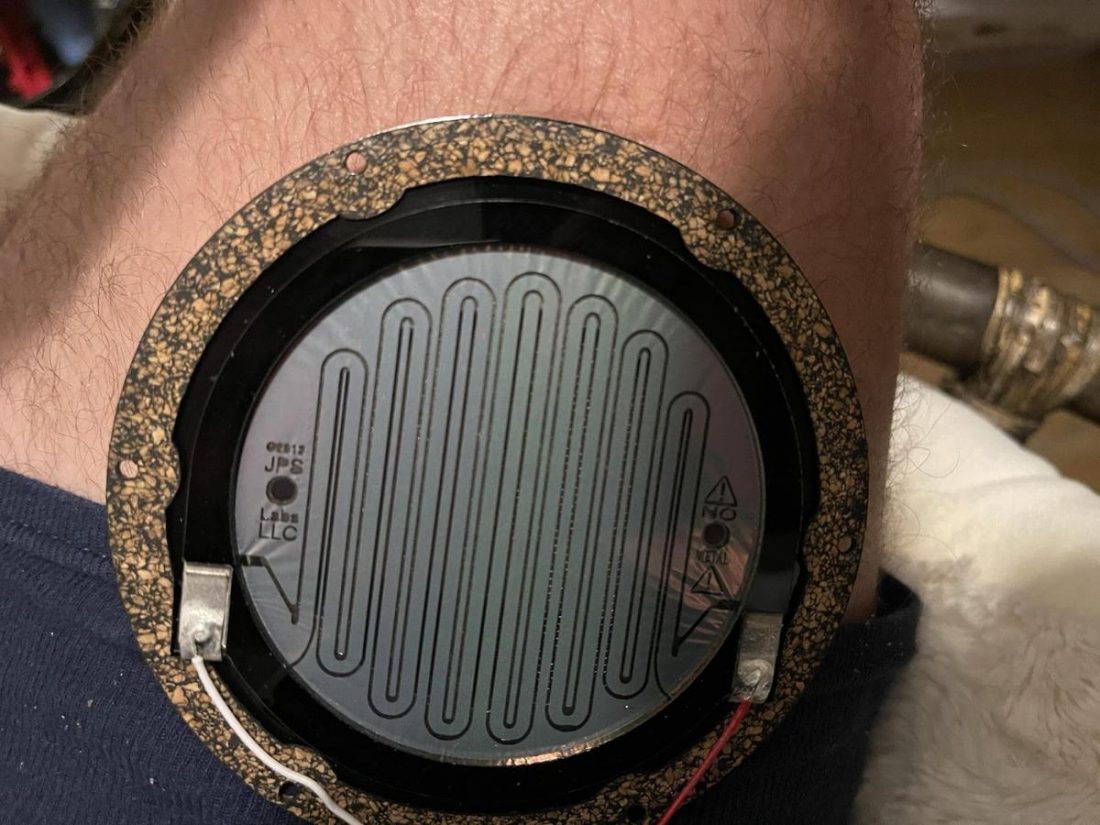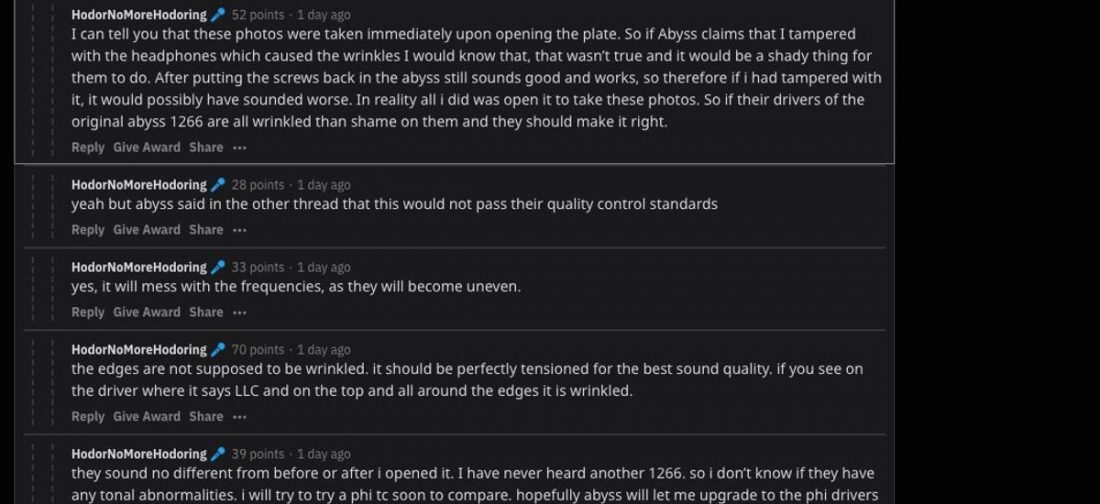Abyss Headphones is having a bad week. They’ve likely found that knee-jerk reactions aren’t as beneficial as considered and professional responses. In case you’ve missed the drama making the rounds of the popular headphone enthusiast sites, I’ll do my best to fill you in.
About Abyss
To set the stage, we should review who Abyss is, and what products they produce. Abyss Headphones is a division of US-based JPS Labs LLC. JPS Labs, founded by Joe Skubinski, has been in business for 30 years, primarily a high-end cable manufacturer. In addition to Abyss Headphones, they also produce StackZilla audio component racks. Abyss headphones are designed by Joe’s son Eric, and they claim that “we engineer, machine, and assemble our headphones from scratch using the finest materials.” The current Abyss lineup is:
Diana v2 – $2995 Diana Phi – $3995 AB-1266 Phi TC – $4995
Of note, JPS Labs offers a couple of upgrade cables for the Abyss headphones:
JPS Labs Superconductor HP upgrade cable set for Abyss AB-1266 – sale price $1990 ($2200 regular price) JPS Labs Superconductor HP upgrade cable set for Abyss DIANA – priced from $1400
All this information has likely led you to form an opinion. Certainly, headphones made by a company offering $1400-$2000 upgrade cables is a controversial topic for many headphone enthusiasts. Regardless, I think it’s fair to assume that Abyss declares their headphones to be of the absolute highest quality. While it’s always difficult to make a value judgment or any sort of return on investment argument for products at the top price tier, generally we should be able to have trust. Trust in that when purchasing from a boutique manufacturer, one should receive a level of quality in materials, design, and support that is proportionate to the price. Certainly, the Abyss headphones have many fans, and generally, they are described as being near the pinnacle of sound quality, with unmatched resolution and neutrality. So what happened to cause all the drama?
ASR Review of the Abyss Diana V2
AudioScienceReview published their review of the Abyss Diana V2 on Monday, Jan 11. The review highlighted some serious concerns, including limited sub-bass response and high measured distortion. In response to critical comments regarding his review, Amir Majidimehr, the founder of ASR, went on to say, “Yes, I have read the other reviews where people say they died and gone to heaven after listening to this headphone. Don’t ask me to rationalize their experiences. I am here to rationalize mine. :)” On the physical side, I think you are getting decent offering in the form of “luxury” when it comes to this headphone. Unfortunately, nothing like that comes along on the fidelity front. Both subjectively and objectively there is no there there. [sic] I like to see near perfection as far as distortion is concerned even if they thought different tonality was merited than our target. At the same time I can’t imagine anyone being able to make a good case that you should have a chunk of your spectrum taken out from the lower to middle treble. This is where a lot of “air” and sense of “hi-fi” exists in music… In summary, I can’t recommend the Abyss Diana V2.”
The initial Abyss response to ASR
The official ABYSS Headphones account defensively responded to this criticism in a YouTube comment. “Amateurs need lessons on proper operation and limitations of their test gear before pretending to be someone they’re not.” Unsurprisingly this didn’t alleviate any concerns and served to add fuel to the fire. In the world of online marketing, this was clearly a blunder. Later, in a couple of Reddit posts, Abyss answered questions regarding this YouTube comment (now deleted). “So you do agree that this comment was very unprofessional and doesn’t speak for the company as a whole?”
The second Abyss response to the ASR review
Finally, Abyss commented directly (on Reddit) regarding the concerns raised in the ASR review. “But what about the distortion in ASR’s measurements?” I would like to clarify that as a team we’re not calling anyone Amateurs. We understand that review-publications have a passion for audio just like us at the Abyss team, and just like the rest of you here.” – Abyss-Headphones
Head-Fi weighs in
Jude Mansilla, the founder of Head-Fi stepped up to address the ASR review and posted his own measurements and conclusions. It should be pointed out that Abyss headphones are currently a financial supporter of Head-Fi and that, in the past, Head-Fi has been accused of less than objective responses regarding previous critiques of their sponsors.
ASR’s response to Head-Fi
Of course, Amir of ASR had a response for Jude: I agree with Amir at AudioScienceReview that this is an interesting, challenging headphone to measure…Even then, additional care was required with the DIANA V2 as tiny movements over the fixture with this headphone could break seal and radically alter the bass response in one or both channels… After testing on our GRAS 45CA (identical in configuration to AudioScienceReview’s), I suspect that the results we are seeing in the measurement in Fig.1 were likely due to issues of placement of the headphone on the measurement fixture…” – Jude Mansilla I have not looked at all of AudioScienceReview’s headphone measurements, but certainly with this one I think AudioScienceReview should consider re-measuring it and working on better and more careful placement of the headphone on their measurement fixture. Again, we would like to improve our DIANA V2 measurements by adding a two or three more seatings ourselves. I do strongly agree, though, that the ABYSS Headphones DIANA V2 is more challenging than most headphones to measure.” – Jude Mansilla
The drama continues on Head-Fi
Somewhat in contrast to the public apology above, both the official Abyss account and Joe Skubinski have continued to post on the Head-Fi thread. Immediately following a user comment ending with “…don’t succumb to the sycophants,” the official Abyss Account posted a link to a clip from the 1983 movie Wargames. Jude did the same thing when we had disagreement with Schiit electronic products. Produced a bunch of graphs, confusing average person when reality was 100% on our side. I hope he doesn’t continue to play this role and becomes an advocate for consumers, not help companies paper over flaws… In other words, Jude’s frequency response measurements highly correlate with my assessment. Indeed I could develop my EQ using his measurements and arrive somewhere close to where I am!… Really, it seemed like an aimless effort to spit out a bunch of chart hoping folks get confused and just jump to the punchline that I need more experience. No Jude. You need to verify what you are measuring using listening tests and do more measurements to know what is good, and what is not a good headphone.” – ASR Confusing? Vaguely threatening? It’s certainly open to interpretation. The post did seem to set the tone for following comments from Abyss founder, Joe Skubinski, who appears to be on the warpath regarding Amir and his ASR review. This sort of public sniping in the forums isn’t the sort of professional response expected from a company. Please note that the concerns being raised may be entirely valid, it’s just the tone that is surprising. I can’t help but think that putting aside emotion and establishing a direct (and perhaps offline) conversation with Amir would be far more constructive. So the question is, why ASR knowingly published flawed measurements? So far the only reason given is they wanted to show how the headphone would ‘sound’ with a gap between ear pad and head. IMO this is nothing but BS, plain and simple.” – Joe Skubinski on Head-Fi This would help to ensure that everyone is on the same page and measuring the same things, and perhaps they might discover that the gap isn’t as wide as what is being created by airing this for all to see. Certainly the public impression would improve.
Pictures of Wrinkled Abyss 1266 Drivers Appear on Reddit
While all the ASR drama was going on, a couple of Reddit r/headphones posts (post 1, post 2) gained notoriety. In these posts, two unconnected owners of the TOTL Abyss 1266 opened up the cups to take a look at the drivers. What they found were wrinkles all around the edges of the planar diaphragm material. Theoretically, wrinkles in the thin driver diaphragm will have an unintended impact on the sound generated by the driver.
Cable concerns
Feelings around the eternal cable debate also stirred the pot. The thin internal wires pictured in the 1266 photos have caused an uproar. The company sells $2000 upgrade cables and the appearance of the internal wiring is of stark contrast.
The Abyss response to the Reddit photos
These pictures led to further responses both from the official Abyss account and from YouTube reviewer and current Abyss employee DMS. Unfortunately, these responses to the driver images were somewhat unclear, accusatory, and contradictory. DMS weighed in with regards to the 2017 driver post: The official Abyss account also initially implied that the driver imperfections were likely the fault of the owner, would not pass quality control measures, and that current production models do not show this issue. Edit: It looks to me like this driver has actually been damaged. I’ve seen drivers from this era around and they don’t look like this. Generally they hold up really well unless someone tampers with them or exposes them to extreme circumstances.” DMS-Official
Abyss official statement
Abyss attempted to address the concerns by releasing a somewhat obtuse statement, stating that the wrinkling is perfectly normal for the 2013 version of the 1266 headphones. However their response regarding the 2017 driver is open to interpretation on whether the wrinkling is normal or not. “This driver still changes in tension during use to achieve optimal operating tension. As a result of these changes, this driver did not have as low of a resting tension as the original (OG) AB-1266. The difference we’re talking about here can be rather subtle.” Our TC models have a very different looking driver and tight QC. The headphone pictured wouldn’t pass QC and we certainly wouldn’t allow it to be shipped.” – Abyss-Headphones Normal or not?
In the case of the original AB-1266 driver (production year 2013) these wrinkles pictured are normal… This picture is normal for the 1st generation design…” – Abyss-Headphones It’s tough to know what to trust when the story seems to change. Are the wrinkles perfectly normal for these models and do not adversely affect the sound? If they are normal, then isn’t it odd to assure readers that current drivers do not show this wrinkling, and to imply that it was as a result of the owner’s negligence, or “conditions far outside of normal use”?
One owner’s response to Abyss
The owner of the 1266 headphones (2013 version) addressed the implications raised by Abyss through many comments (summarized below). He made it clear that he’s generally very happy with how the headphones sound, but is dismayed by the driver’s appearance and the response from Abyss. He also posted a video of opening up the left cup. Again, driver wrinkling is clearly evident. It appears that this situation could have been easily handled. Doesn’t it seem obvious for Abyss to immediately contact the affected owners directly and initiate a warranty repair? To head concerns off at the pass? It is not unreasonable to expect companies to step up and prove why their headphones are worth a premium. i literally just took out the 8 screws. carefully lifted open the lid. took a few pics and then put the screws back in. i was super careful and I am an av engineer with electrical and audio soldering skills. so i felt pretty comfortable doing it… It has lived in my temperature controlled room. They sound fine. The bass only rattles the whole headphone and sounds bloated if i crank my mjolnir 2 to like 3-4 oclock volume… I’m not sure if it sounds wrong because this is the only 1266 i have ever heard. I was extremely disheartened to find the wrinkles though on my driver as that can’t be good for sound quality. I don’t know if this is just normal break in or if my drivers or damaged, but i certainly did not put them in any extreme temperatures to damage them and and I babied them… …they sound no different from before or after i opened it. I have never heard another 1266. so i don’t know if they have any tonal abnormalities. i will try to try a phi tc soon to compare. hopefully abyss will let me upgrade to the phi drivers at a discount or on the house. Honestly I enjoy them better than my HEKSE and hd800. superior imaging and detail.” In the end, it all comes down to service. All companies should take care of their customer’s concerns, regardless of whether they consider them valid or not. However, rather than displaying concern or care, the tone from Abyss was defensive and full of blame. And let’s not forget, these customers paid $5000 for these headphones.
Boiling It All Down
There is a lot of information to digest. In a nutshell, there are two different issues raised with Abyss this week. First is the ASR review: Secondly the pictures of wrinkled 1266 drivers on Reddit:
Further Questions and Considerations
We are left with a lot of outstanding questions that should be considered before we draw any conclusions.
Are the ASR results indicative of a problem? Did ASR measure or interpret the results accurately? Can we trust the Head-Fi measurements or conclusions of their sponsor’s product? Are there driver quality control issues in previous or current Abyss models? And if so, do wrinkles in the drivers negatively impact the sound, or are they (as later claimed) meant to be there?
What Should Abyss Do?
First and foremost, Abyss should take a proactive approach to resolve their customer’s concerns. They must not allow isolated incidents to blow up and (perhaps permanently) color the community’s perception of their products. Clearly, Abyss has communication issues. Knee-jerk responses, contradictory information, and customer blame does far more lasting financial and reputational damage than offering the occasional repair. Abyss really needs an available publicist to draft all company communications. Then they must follow up internally to ensure that their employees know and follow proper communication procedures. In short, they should learn from this situation. Step up and offer a lifetime warranty. Sure, this may impact the bottom line, but it’s the right thing to do for customers who pay for these TOTL products. As I tell my six-year-old, every time we make a mistake, it presents an opportunity to learn and improve.
